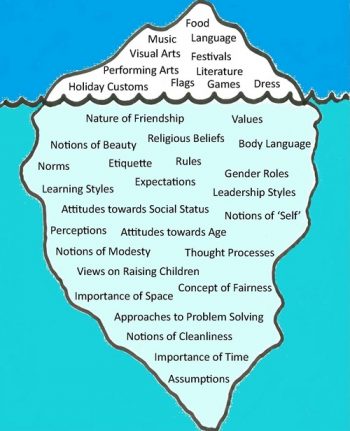

How is culture like an onion? How does the iceberg model compare a culture to an iceberg?ġ – The Iceberg. We use Craig Storti’s definition of culture as “the shared assumptions, values and beliefs of a group of people that result in characteristic behaviors” (Storti, 1999, p. What is Craig T Storti’s definition of culture and how does this definition connect with our iceberg model of culture?Ĭulture an an Iceberg #1 The idea is to describe the ways that culture is visible (above the water line) and invisible (below the surface). These beliefs then stem from the core of the “onion”, the most basic values of any culture. However, like an onion, you can “peel” culture and strip down its layers. It is mostly invisible, but these invisible values guide behavior and social interactions. Try it, touch it, eat it, make mistakes, apologise, listen, try again.Ĭulture is not something you can measure. Experience, not just in the form of books and films, but immersion in culture.We cannot judge a new culture based only on what we see when we first enter it….There are 3 key ingredients in cultural competence: The 10% above the water is really visible to everyone who looks in that direction, and the 90% below the water is both real and dangerous, since it can sink the unwary sojourner.ģ) Thus the iceberg theory stresses a prominent communicative principle, which beseeches all participants of communication to regard the submerged and exposed part of the message, together, in order to experience a more genuine exchange that encompasses the transmitted and un-transmitted. Why is culture not like an iceberg?Ĭomparing culture to an iceberg floating in the sea implies that culture is an actual thing. Hidden differences include cultural values and assumptions. The 90% of the iceberg that remains unseen below the surface represents the hidden cultural differences. The small ‘tip of the iceberg’ that can be seen above the water level represents visible cultural elements. Why is an iceberg used as a metaphor for culture?

Additionally, this is what individuals in the culture have learned about what is acceptable and unacceptable behavior in society. This includes the ideas, preferences and priorities that comprise individual attitudes and values. Under the water line of the cultural iceberg are many important components of culture.

5 How does the iceberg model compare a culture to an iceberg?.4 What is Craig T Storti’s definition of culture and how does this definition connect with our iceberg model of culture?.



 0 kommentar(er)
0 kommentar(er)
